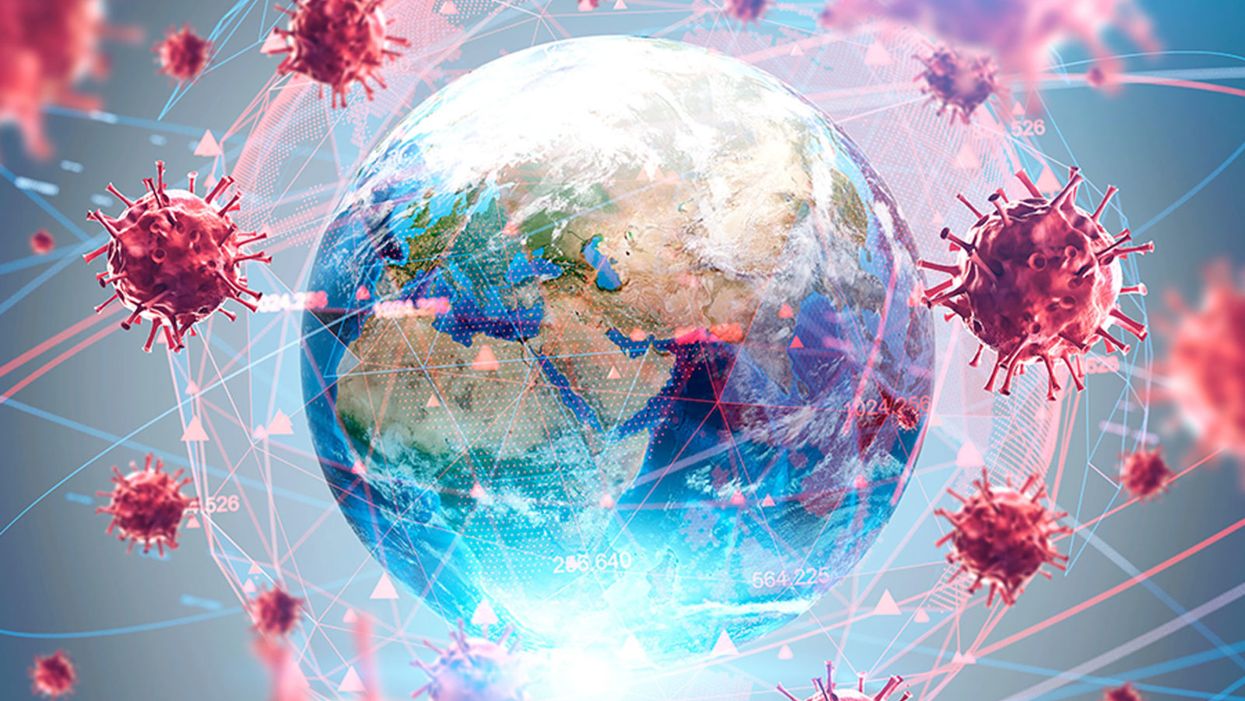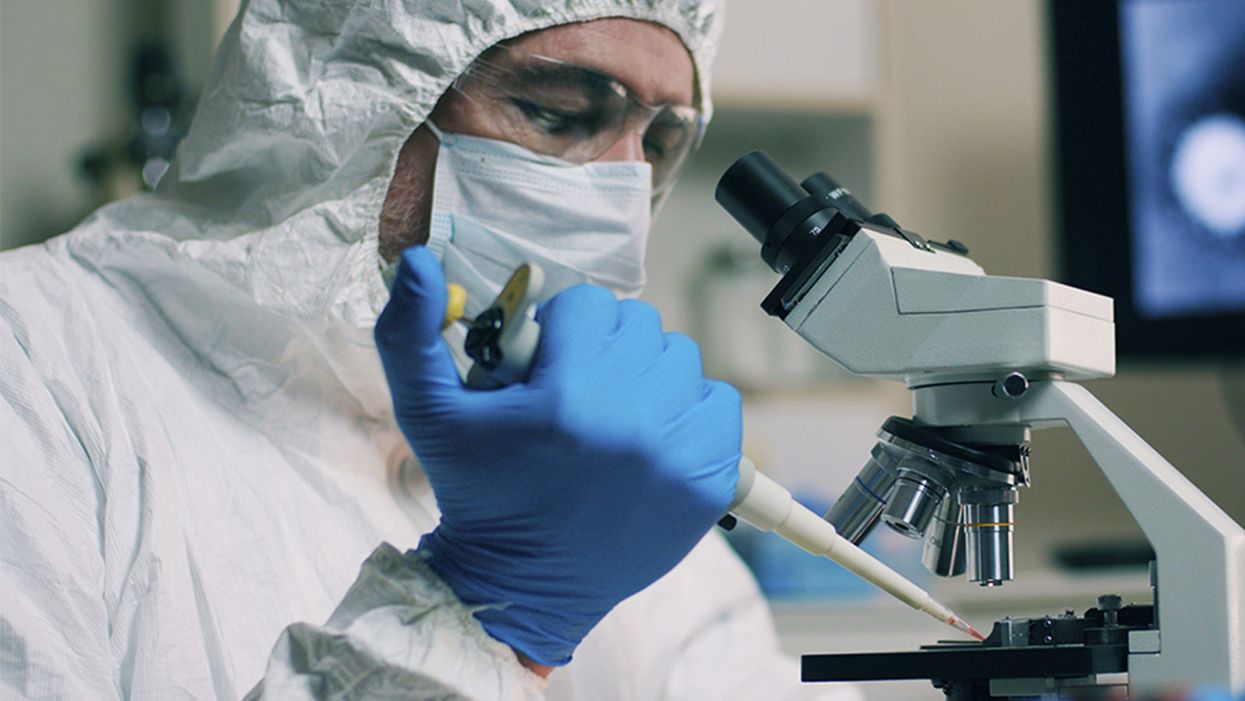Can Genetic Testing Help Shed Light on the Autism Epidemic?

A little boy standing by a window in contemplation. (© altanaka/Fotolia)
Autism cases are still on the rise, and scientists don't know why. In April, the Centers for Disease Control (CDC) reported that rates of autism had increased once again, now at an estimated 1 in 59 children up from 1 in 68 just two years ago. Rates have been climbing steadily since 2007 when the CDC initially estimated that 1 in 150 children were on the autism spectrum.
Some clinicians are concerned that the creeping expansion of autism is causing the diagnosis to lose its meaning.
The standard explanation for this increase has been the expansion of the definition of autism to include milder forms like Asperger's, as well as a heightened awareness of the condition that has improved screening efforts. For example, the most recent jump is attributed to children in minority communities being diagnosed who might have previously gone under the radar. In addition, more federally funded resources are available to children with autism than other types of developmental disorders, which may prompt families or physicians to push harder for a diagnosis.
Some clinicians are concerned that the creeping expansion of autism is causing the diagnosis to lose its meaning. William Graf, a pediatric neurologist at Connecticut Children's Medical Center, says that when a nurse tells him that a new patient has a history of autism, the term is no longer a useful description. "Even though I know this topic extremely well, I cannot picture the child anymore," he says. "Use the words mild, moderate, or severe. Just give me a couple more clues, because when you say autism today, I have no idea what people are talking about anymore."
Genetic testing has emerged as one potential way to remedy the overly broad label by narrowing down a heterogeneous diagnosis to a specific genetic disorder. According to Suma Shankar, a medical geneticist at the University of California, Davis, up to 60 percent of autism cases could be attributed to underlying genetic causes. Common examples include Fragile X Syndrome or Rett Syndrome—neurodevelopmental disorders that are caused by mutations in individual genes and are behaviorally classified as autism.
With more than 500 different mutations associated with autism, very few additional diagnoses provide meaningful information.
Having a genetic diagnosis in addition to an autism diagnosis can help families in several ways, says Shankar. Knowing the genetic origin can alert families to other potential health problems that are linked to the mutation, such as heart defects or problems with the immune system. It may also help clinicians provide more targeted behavioral therapies and could one day lead to the development of drug treatments for underlying neurochemical abnormalities. "It will pave the way to begin to tease out treatments," Shankar says.
When a doctor diagnoses a child as having a specific genetic condition, the label of autism is still kept because it is more well-known and gives the child access to more state-funded resources. Children can thus be diagnosed with multiple conditions: autism spectrum disorder and their specific gene mutation. However, with more than 500 different mutations associated with autism, very few additional diagnoses provide meaningful information. What's more, the presence or absence of a mutation doesn't necessarily indicate whether the child is on the mild or severe end of the autism spectrum.
Because of this, Graf doubts that genetic classifications are really that useful. He tells the story of a boy with epilepsy and severe intellectual disabilities who was diagnosed with autism as a young child. Years later, Graf ordered genetic testing for the boy and discovered that he had a mutation in the gene SYNGAP1. However, this knowledge didn't change the boy's autism status. "That diagnosis [SYNGAP1] turns out to be very specific for him, but it will never be a household name. Biologically it's good to know, and now it's all over his chart. But on a societal level he still needs this catch-all label [of autism]," Graf says.
"It gives some information, but to what degree does that change treatment or prognosis?"
Jennifer Singh, a sociologist at Georgia Tech who wrote the book Multiple Autisms: Spectrums of Advocacy and Genomic Science, agrees. "I don't know that the knowledge gained from just having a gene that's linked to autism," is that beneficial, she says. "It gives some information, but to what degree does that change treatment or prognosis? Because at the end of the day you have to address the issues that are at hand, whatever they might be."
As more children are diagnosed with autism, knowledge of the underlying genetic mutation causing the condition could help families better understand the diagnosis and anticipate their child's developmental trajectory. However, for the vast majority, an additional label provides little clarity or consolation.
Instead of spending money on genetic screens, Singh thinks the resources would be better used on additional services for people who don't have access to behavioral, speech, or occupational therapy. "Things that are really going to matter for this child in their future," she says.
The Best Coronavirus Experts to Follow on Twitter
Following these experts on social media will help you stay well-informed about the coronavirus. Global virus and disease spread, coronavirus.
As the coronavirus tears across the globe, the world's anxiety is at a fever-pitch, and we're all craving information to stay on top of the crisis.
But turning to the Internet for credible updates isn't as simple as it sounds, since we have an invisible foe spreading as quickly as the virus itself: misinformation. From wild conspiracy theories to baseless rumors, an infodemic is in full swing.
For the latest official information, you should follow the CDC, WHO, and FDA, in addition to your local public health department. But it's also helpful to pay attention to the scientists, doctors, public health experts and journalists who are sharing their perspectives in real time as new developments unfold. Here's a handy guide to get you started:
VIROLOGY
Dr. Trevor Bedford/@trvrb: Scientist at the Fred Hutchinson Cancer Research Center studying viruses, evolution and immunity.
Dr. Benhur Lee/@VirusWhisperer: Professor of microbiology at the Icahn School of Medicine at Mount Sinai
Dr. Angela Rasmussen/@angie_rasmussen: Virologist and associate research scientist at Columbia University
Dr. Florian Krammer/@florian_krammer: Professor of Microbiology at the Icahn School of Medicine at Mount Sinai
EPIDEMIOLOGY:
Dr. Alice Sim/@alicesim: Infectious disease epidemiologist and consultant at the World Health Organization
Dr. Tara C. Smith/@aetiology: Infectious disease specialist and professor at Kent State University
Dr. Caitlin Rivers/@cmyeaton: Epidemiologist and assistant professor at the Johns Hopkins Bloomberg School of Public Health
Dr. Michael Mina/@michaelmina_lab: Physician and Assistant Professor of Epidemiology & Immunology at the Harvard TH Chan School of Public Health
INFECTIOUS DISEASE:
Dr. Nahid Bhadelia/@BhadeliaMD: Infectious diseases physician and the medical director of Special Pathogens Unit at Boston University School of Medicine
Dr. Paul Sax/@PaulSaxMD: Clinical Director of the Division of Infectious Diseases at Brigham and Women's Hospital
Dr. Priya Sampathkumar/@PsampathkumarMD: Infectious Disease Specialist at the Mayo Clinic
Dr. Krutika Kuppalli/@KrutikaKuppalli: Medical doctor and Infectious Disease Specialist based in Palo Alto, CA
PANDEMIC PREP:
Dr. Syra Madad/@syramadad: Senior Director, System-wide Special Pathogens Program at New York City Health + Hospitals
Dr Sylvie Briand/@SCBriand: Director of Pandemic and Epidemic Diseases Department at the World Health Organization
Jeremy Konyndyk/@JeremyKonyndyk: Senior Policy Fellow at the Center for Global Development
Amesh Adalja/@AmeshAA: Senior Scholar at the Johns Hopkins University Center for Health Security
PUBLIC HEALTH:
Scott Becker/@scottjbecker: CEO of the Association of Public Health Laboratories
Dr. Scott Gottlieb/@ScottGottliebMD: Physician, former commissioner of the Food and Drug Administration
APHA Public Health Nursing/@APHAPHN: Public Health Nursing Section of the American Public Health Association
Dr. Tom Inglesby/@T_Inglesby: Director of the Johns Hopkins SPH Center for Health Security
Dr. Nancy Messonnier/@DrNancyM_CDC: Director of the Center for the National Center for Immunization and Respiratory Diseases (NCIRD)
Dr. Arthur Caplan/@ArthurCaplan: Professor of Bioethics at New York University Langone Medical Center
SCIENCE JOURNALISTS:
Laura Helmuth/@laurahelmuth: Incoming Editor in Chief of Scientific American
Helen Branswell/@HelenBranswell: Infectious disease and public health reporter at STAT
Sharon Begley/@sxbegle: Senior writer at STAT
Carolyn Johnson/@carolynyjohnson: Science reporter at the Washington Post
Amy Maxmen/@amymaxmen: Science writer and senior reporter at Nature
Laurie Garrett/@Laurie_Garrett: Pulitzer-prize winning science journalist, author of The Coming Plague, former senior fellow for global health at the Council on Foreign Relations
Soumya Karlamangla/@skarlamangla: Health writer at the Los Angeles Times
André Picard/@picardonhealth: Health Columnist, The Globe and Mail
Caroline Chen/@CarolineYLChen: Healthcare reporter at ProPublica
Andrew Jacobs/@AndrewJacobsNYT: Science reporter at the New York Times
Meg Tirrell/@megtirrell: Biotech and pharma reporter for CNBC
Kira Peikoff was the editor-in-chief of Leaps.org from 2017 to 2021. As a journalist, her work has appeared in The New York Times, Newsweek, Nautilus, Popular Mechanics, The New York Academy of Sciences, and other outlets. She is also the author of four suspense novels that explore controversial issues arising from scientific innovation: Living Proof, No Time to Die, Die Again Tomorrow, and Mother Knows Best. Peikoff holds a B.A. in Journalism from New York University and an M.S. in Bioethics from Columbia University. She lives in New Jersey with her husband and two young sons. Follow her on Twitter @KiraPeikoff.
A lab tech handling a sample of the novel coronavirus.
One of the main factors that will influence the ultimate trajectory of the novel coronavirus pandemic will be the availability of a vaccine.
Vaccine development has traditionally been a process measured in years and even decades.
Vaccines are incontrovertibly the best means to control infectious diseases and there are no human vaccines against any of the (now) 7 known human coronaviruses. As soon as the gravity of this outbreak was recognized, several companies, along with governmental and non-governmental partners, have embarked on a rapid development program to develop a vaccine targeted at this virus.
Vaccine development has traditionally been a process measured in years and even decades as scientists tinker with a pathogen trying to weaken or dissemble it to render it capable of creating an effective immune response with acceptable levels of side effects. However, in 2020, powerful new vaccine technologies are available to augment traditional vaccine development and are responsible for the rapid delivery of a vaccine candidate for the start of clinical trials.
Vaccine Platforms: A Game-Changing Technology
The new technologies that are being harnessed are what are known as vaccine platform technologies. Vaccine platforms, as my colleagues and I wrote in a report assessing their promise, offer a means to use the same building blocks to make more than one vaccine. To slightly oversimply, a vaccine platform confers the ability to switch out the pathogen being targeted very rapidly, akin to changing a video game cartridge. Indeed, the recently FDA-licensed Ebola vaccine uses another virus as a platform with the requisite Ebola protein inserted.
Because of this rapid availability to utilize platforms for a variety of different targets, the initial development process can be significantly shortened. This is especially true for vaccines utilizing the genetic material of the target alone. These DNA and RNA vaccines basically can be "printed" once the genetic sequence of the target is known.
An RNA vaccine is the approach being used by the Cambridge-based biotech company Moderna – which took just 42 days to produce an experimental vaccine candidate. Clinical testing is expected to begin next month on 45 healthy volunteers.
Another biotech, the Pennsylvania-based Inovio, is using a DNA approach. In essence, such vaccines involve the genetic material being injected and translated into a viral protein by human cells, which then prompt the immune system to make antibodies.
There are other approaches as well. One company, the Maryland-based Novavax, will use nanoparticles, while another is attempting to adapt an orally administered avian coronavirus vaccine and Johnson & Johnson is using different virus platforms to deliver coronavirus proteins (similar to their experimental Ebola vaccine).
At this stage, it is important for all approaches to be on the table in the hope that at least one makes it through clinical trials. There also may be a need for different types of vaccines for different populations.
Vaccines Will Still Take Time
Despite the quick development time made possible by the use of vaccine platforms, clinical testing for safety, efficacy, and dosing schedules will still take months to complete. After this process, the vaccine will need to be mass produced in large quantities to vaccinate, basically, the world. So, for all intents and purposes, we cannot expect to see an approved vaccine for at least a year or maybe longer if everything does not go perfectly well in clinical trials.
Vaccine platform technologies offer a bright ray of hope in the bleak shadow of the pandemic.
Once a vaccine is available, it will likely appear in batches to be distributed to those at highest risk for severe disease, such as the elderly and those with underlying conditions, as well as healthcare workers, first. At this time, it appears children are less likely to experience severe illness and they may not be the first targets for the vaccine but, if this virus is with us (as is predicted), coronavirus vaccination could become part of routine childhood vaccinations.
Changing Pandemic Trajectory
Vaccination will not come fast enough to impact the initial wave of the novel virus which may continue until summer approaches in temperate climates. However, it will be a crucial tool to blunt the impact of a future appearance in the following respiratory virus season. This reappearance is all but assured as this virus has adeptly established itself in human populations and is behaving like the community-acquired coronavirus that it is.
A Glimmer of Hope
When looking at the trajectory of the virus, it can appear, thus far, that no public health effort has made a substantial impact on the spread of the virus. However, that trajectory will change with the advent of an efficacious vaccine. Such a vaccine, especially if conferring protection against other human coronaviruses, may result in coronaviruses being taken off the table of biological threats altogether in the future.
Vaccine platform technologies offer a bright ray of hope in the bleak shadow of the pandemic and, if successful, will change the way the world approaches future pandemic threats with more rapid deployment of platform-based vaccines.
Dr. Adalja is focused on emerging infectious disease, pandemic preparedness, and biosecurity. He has served on US government panels tasked with developing guidelines for the treatment of plague, botulism, and anthrax in mass casualty settings and the system of care for infectious disease emergencies, and as an external advisor to the New York City Health and Hospital Emergency Management Highly Infectious Disease training program, as well as on a FEMA working group on nuclear disaster recovery. Dr. Adalja is an Associate Editor of the journal Health Security. He was a coeditor of the volume Global Catastrophic Biological Risks, a contributing author for the Handbook of Bioterrorism and Disaster Medicine, the Emergency Medicine CorePendium, Clinical Microbiology Made Ridiculously Simple, UpToDate's section on biological terrorism, and a NATO volume on bioterrorism. He has also published in such journals as the New England Journal of Medicine, the Journal of Infectious Diseases, Clinical Infectious Diseases, Emerging Infectious Diseases, and the Annals of Emergency Medicine. He is a board-certified physician in internal medicine, emergency medicine, infectious diseases, and critical care medicine. Follow him on Twitter: @AmeshAA

